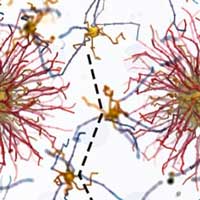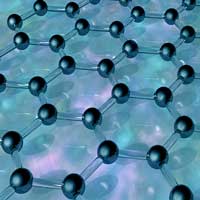 Using specially created nanofiber webs allows sunlight to decay the dyes safely, inexpensively and easily.
Using specially created nanofiber webs allows sunlight to decay the dyes safely, inexpensively and easily.
Tuesday, August 27, 2019
Nanofiber webs remove toxic dye pollutants from wastewater
 Using specially created nanofiber webs allows sunlight to decay the dyes safely, inexpensively and easily.
Using specially created nanofiber webs allows sunlight to decay the dyes safely, inexpensively and easily.
Carbon nanotube breathalyzer can detect marijuana
 Researchers developed a breathalyzer device that can measure the amount of tetrahydrocannabinol (THC), the psychoactive compound in marijuana, in the user's breath.
Researchers developed a breathalyzer device that can measure the amount of tetrahydrocannabinol (THC), the psychoactive compound in marijuana, in the user's breath.
Scientists discover 'electron equivalents' in colloidal systems
 Scientists tethered smaller particles in colloidal crystals to larger ones using DNA, allowing them to determine how the smaller particles filled in the regions surrounding the larger ones.
Scientists tethered smaller particles in colloidal crystals to larger ones using DNA, allowing them to determine how the smaller particles filled in the regions surrounding the larger ones.
Gold nanoparticles shown to be safe and effective treatment for prostate cancer
 Bio-compatible gold nanoparticles designed to convert near-infrared light to heat have been shown to safely and effectively ablate low- to intermediate-grade tumors within the prostate.
Bio-compatible gold nanoparticles designed to convert near-infrared light to heat have been shown to safely and effectively ablate low- to intermediate-grade tumors within the prostate.
Laser printing graphene tech produces waterproof e-textiles in minutes
 The next generation of waterproof smart fabrics will be laser printed and made in minutes. That's the future imagined by the researchers behind new e-textile technology.
The next generation of waterproof smart fabrics will be laser printed and made in minutes. That's the future imagined by the researchers behind new e-textile technology.
Enhancing materials for hi-res patterning to advance microelectronics
 Researchers have created 'hybrid' organic-inorganic materials for transferring ultrasmall, high-aspect-ratio features into silicon for next-generation electronic devices.
Researchers have created 'hybrid' organic-inorganic materials for transferring ultrasmall, high-aspect-ratio features into silicon for next-generation electronic devices.
Nanoparticles could someday give humans built-in night vision
 Sscientists have used nanoparticles to confer a movie-like superpower on ordinary mice: the ability to see near-infrared light. They report progress in making versions of these nanoparticles that could someday give built-in night vision to humans.
Sscientists have used nanoparticles to confer a movie-like superpower on ordinary mice: the ability to see near-infrared light. They report progress in making versions of these nanoparticles that could someday give built-in night vision to humans.
Researchers discover unusual quasiparticle in common 2D material
 Scientists discovered a new quasiparticle named 'polaronic trion' in 2D material molybdenum disulphide. It could be used to design an optical modulator for visible light that is controlled by both temperature and electric fields.
Scientists discovered a new quasiparticle named 'polaronic trion' in 2D material molybdenum disulphide. It could be used to design an optical modulator for visible light that is controlled by both temperature and electric fields.
Biological risk potential of graphene quantum dots studied
 Researchers examined whether these particles are potentially dangerous for the organism and how cells cope with them once they have been incorporated.
Researchers examined whether these particles are potentially dangerous for the organism and how cells cope with them once they have been incorporated.
Subscribe to:
Comments (Atom)
